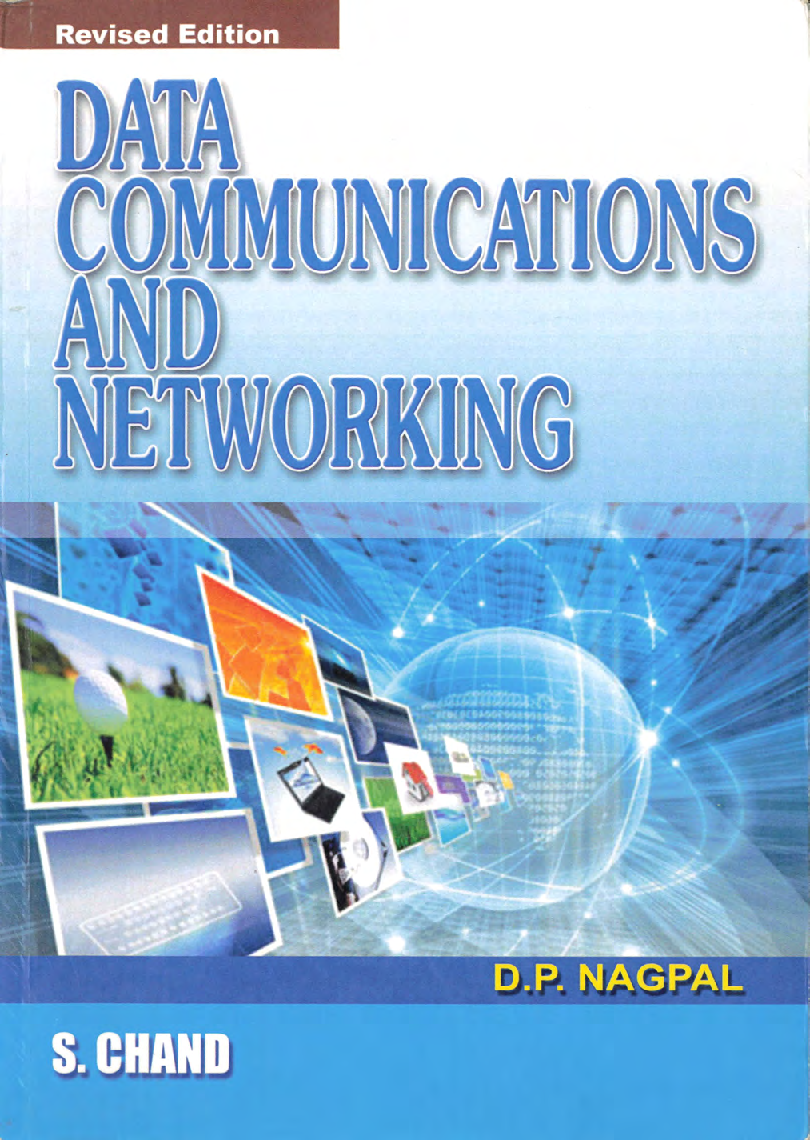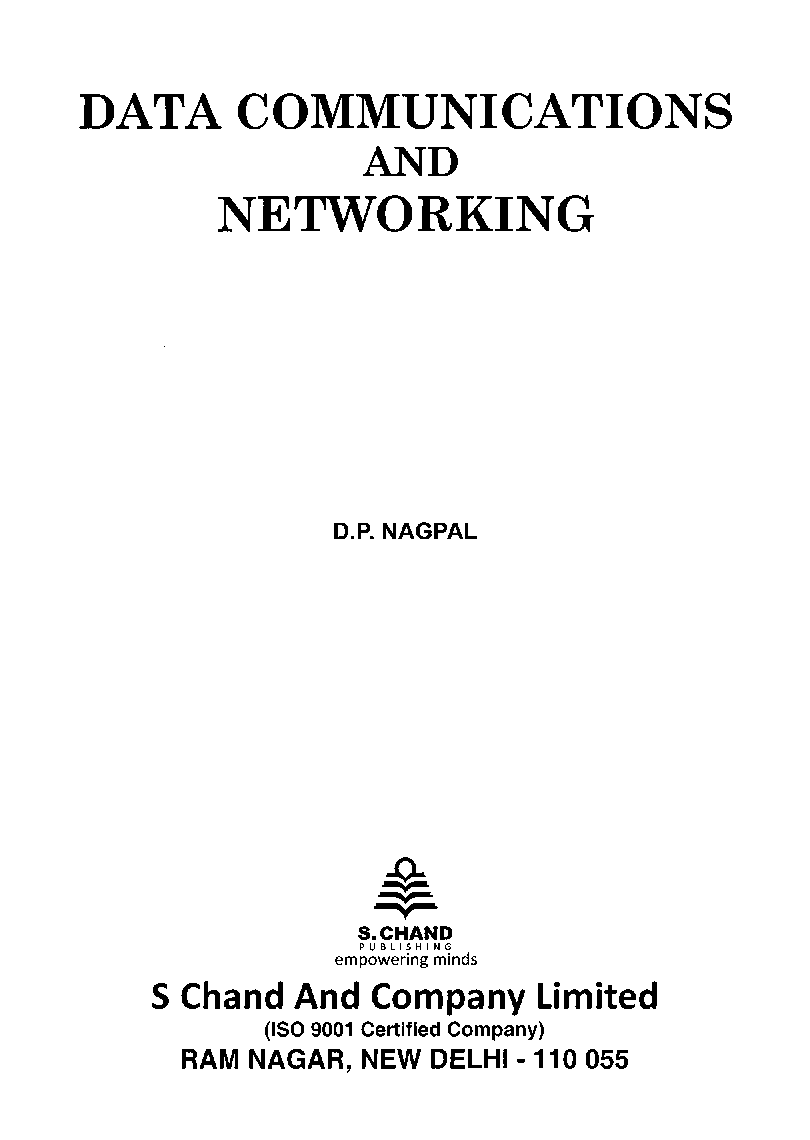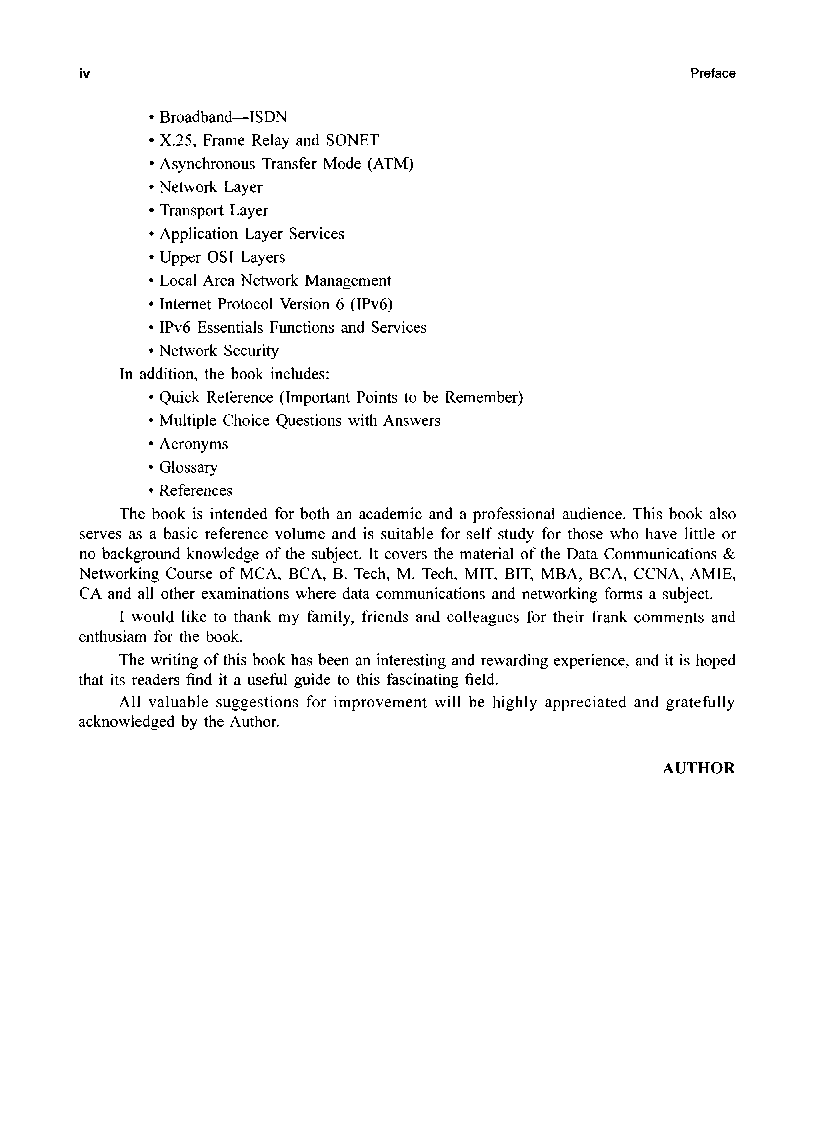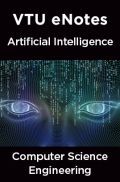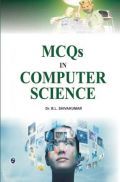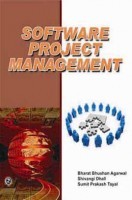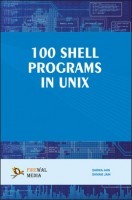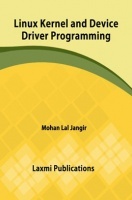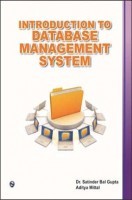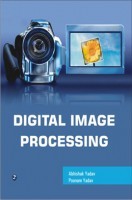It is the ambitions purpose of this book to provide a unified view of the broad field of data communications and networking. The organisation of the book neglects an attempt to break this massive subject into comprehensible parts and build, piece by piece, a survey of the state of art. The book emphasizes basic principles and topics of fundamental importance concerning the technology and architecture of data communications and networking.
This book Useful for Engineering Student.
1 Data Communications
2 Network Mechanisms.
3 Interfaces, Transmission Media, Multiplexing & Error Detection
4 Local Area Networks (Lan) Architectures
5 Networking And Internetworking Devices
6 Tcp/Ip Architecture
7 Metropolitan Area Networks & Wide Area Networks
8 The Physical And Datalink Layers
9 Ethernet
10 Token Ring
11 Token Bus
12 Fiber Distributed Data Interface (Fddi)
13 Integrated Services Digital Network
14 Broadband—Isdn
15 X.25, Frame Relay And Sonet
16 Asynchronous Transfer Mode (Atm)
17 Network Layer
18 Transport Layer
19 Application Layer Services
20 Upper Osi Layers
21 Local Area Network Management
22 Internet Protocol Version 6: Ipv6
23 Ipv6 Essential Functions And Services
24 Network Security
Appendix A Quick Reference (Important Points To Be Remember)
Appendix B Practice Set (Multiple Choice Questions)
Appendix C Acronyms
Appendix D Glossary
Appendix E References


